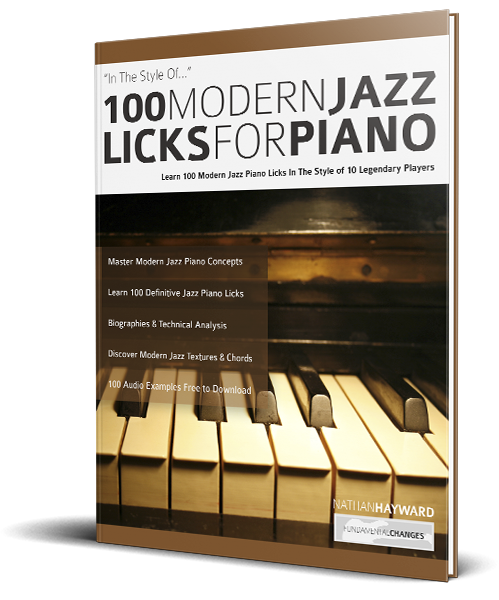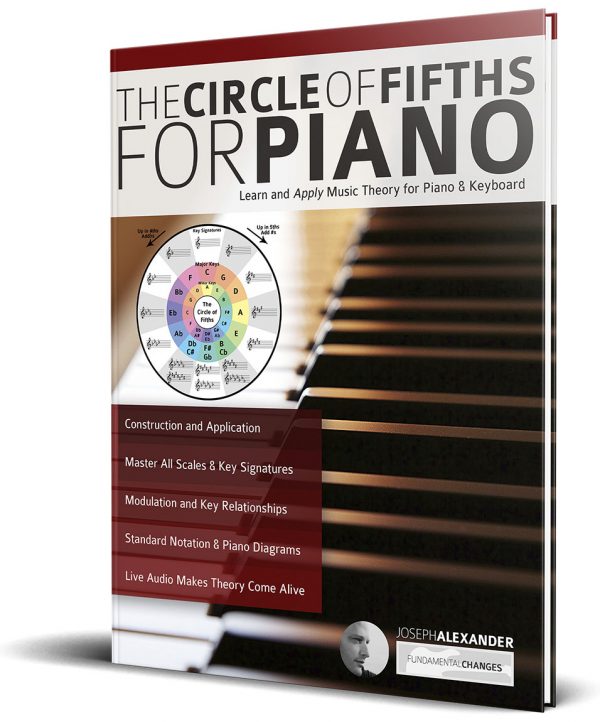
Reasons to Buy From Us
Over 1,000,000 happy customers.
No joke – and not a word of a lie, we’ve sold over a million music tuition methods on Amazon.
Over 10,000 5* Reviews
Our books are consistently the best-selling music titles on Amazon and have received tens of thousands of positive reviews.
Get every example in your book as an audio file – for free!
Reading from your screen is one thing, but learning music is all about hearing it in action. Every book contains a link to download every example and backing track right to your computer
Instant Delivery
Every book is delivered via download and email as soon as you hit buy now.
Learn from legendary musicians
We publish books by the greatest and most influential musicians in the world.
“Whenever I teach students, I ask them about what books they have and they always like the books from Fundamental Changes. You guys have a great reputation! And, of course, I thank you for the opportunity to publish my own book – you did it so well!”
Mike Stern
“I’ve published eight books with Fundamental Changes and each one beautifully teaches a different element of my musical voice on guitar”
Dr Martin Taylor MBE
“The artists you work with, and the quality of your work speaks for itself.”
Tommy Emmanuel
“Wow! You guys work hard and the material you produce is great!”
John Patitucci
“I wish these books had been available when I was learning to play. I can’t recommend them highly enough!”
Ulf Wakenius
“I can’t believe all the great books you’ve published!”
Jennifer Batten
“These books are great! You guys really know your s**t!”
Oz Noy
Beginner Jazz Piano Soloing
$19.99
Beginner Jazz Piano Soloingis a simple, easy-to-follow guide, that teaches you the language of jazz in easy steps. This well-conceived method is so effective that even if you are a novice at jazz, by the end you’ll be able to confidently improvise a solo.
This book demystifies jazz improvisation as it works through each idea step by step. You’ll never feel overwhelmed – instead you’ll be encouraged by your rapid progress. By the end you’ll have built a musical vocabulary that will help you to solo convincingly over simple jazz chord sequences.
Description
Learn Jazz Piano Soloing Skills With This Easy Step-by-Step Method
Do you want to learn how to improvise jazz piano solos?
Would you like to recreate the sounds of the jazz piano greats, but have no idea where to begin?
Do you want a simple method to teach you how to solo confidently and even write your own licks?
Beginner Jazz Piano Soloingis a simple, easy-to-follow guide, that teaches you the language of jazz in easy steps. This well-conceived method is so effective that even if you are a novice at jazz, by the end you’ll be able to confidently improvise a solo.
Like any language, jazz has its own vocabulary and expert tutor Nathan Hayward will teach you the right way to learn, memorise and apply it.
You’ll discover…
- Major and Minor Pentatonic and Blues scales
- How to blend scales to make new sounds
- How to use simple ideas to create an authentic jazz sound
- Expand your jazz vocabulary with dozens of licks
- How to connect licks to form longer ideas
- How to apply rhythmic ideas to get endless variations of the licks you know
This book demystifies jazz improvisation as it works through each idea step by step. You’ll never feel overwhelmed – instead you’ll be encouraged by your rapid progress. By the end you’ll have built a musical vocabulary that will help you to solo convincingly over simple jazz chord sequences.
- Initial focus on right hand melodies, so you learn free of distractions
- Internalise the sound of each scale by singing or humming along with your playing
- Learn the best way to memorise jazz phrases
- Discover how to create your own great licks from scratch – it’s easy if you know the method!
You can begin to improvise jazz piano today!
There is no better way of learning than actual playing, and Beginner Jazz Piano Soloing teaches you jazz by doing, improving your piano skills at the same time.
Each chapter teaches five authentic jazz licks, then gives you the tools to create your own and write them down. At the end of each chapter you’ll learn a tune and be able to practice your licks over the provided backing track. You’ll return to the backing tracks again and again to practice your improvisation skills, road test new licks, and increase your confidence.
The combination of the major and minor pentatonic and blues scales is the basis of a vast amount of jazz vocabulary. You’ll learn how to expertly apply them.
- Discover how the blues is used in jazz
- Understand which are the “safe” notes over any chord
- Learn how to create tension and resolve it, like the great jazz pianists
- Learn how to alter licks rhythmically to create fresh new phrases
- Discover how to effectively use space and light/shade in your playing
- Learn how to play licks with wider intervals for a more modern jazz sound
With dozens of great licks under your right hand, you’ll then learn the role of the left hand.
- Learn simple accompaniments for your melodic lines
- Discover a simple refresher of essential chord types and the three most used 7th chords in jazz
- Learn the basic and most effective chord voicings used by all jazz pianists
- Add syncopation in the left hand to bring your jazz lines to life
- Learn a vocabulary of great left-hand accompaniment ideas you can use in dozens of musical situations
Finally, you learn how to play melodic lines that seamlessly move from one chord to another and discover an introduction to playing passing notes to bring more colour and variety to your licks.
Hear it!
Learning musical ideas on paper is one thing, but jazz is an improvised language that needs to be heard. Beginner Jazz Piano Soloing comes with over 90 downloadable audio examples that help you hear exactly how each lick and phrase should sound, and includes backing tracks for you to jam along to.
If you play some piano, but want to learn jazz, there is no better resource, so check out this book today.
Buy it now

Reasons to Buy From Us
Over 1,000,000 happy customers.
No joke – and not a word of a lie, we’ve sold over a million music tuition methods on Amazon.
Over 10,000 5* Reviews
Our books are consistently the best-selling music titles on Amazon and have received tens of thousands of positive reviews.
Get every example in your book as an audio file – for free!
Reading from your screen is one thing, but learning music is all about hearing it in action. Every book contains a link to download every example and backing track right to your computer
Instant Delivery
Every book is delivered via download and email as soon as you hit buy now.
Learn from legendary musicians
We publish books by the greatest and most influential musicians in the world.
“Whenever I teach students, I ask them about what books they have and they always like the books from Fundamental Changes. You guys have a great reputation! And, of course, I thank you for the opportunity to publish my own book – you did it so well!”
Mike Stern
“I’ve published eight books with Fundamental Changes and each one beautifully teaches a different element of my musical voice on guitar”
Dr Martin Taylor MBE
“The artists you work with, and the quality of your work speaks for itself.”
Tommy Emmanuel
“Wow! You guys work hard and the material you produce is great!”
John Patitucci
“I wish these books had been available when I was learning to play. I can’t recommend them highly enough!”
Ulf Wakenius
“I can’t believe all the great books you’ve published!”
Jennifer Batten
“These books are great! You guys really know your s**t!”
Oz Noy
“The artists you work with, and the quality of your work speaks for itself.”
Tommy Emmanuel
© Copyright Fundamental Changes Ltd 2025
No.6 The Pound, Ampney Crucis, England, GL7 5SA





